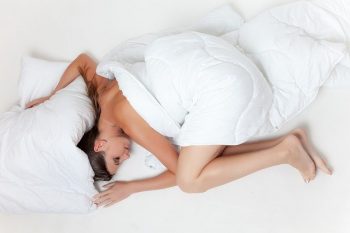A New Wrinkle in Facial Aging
 Let’s say you consider yourself to be fairly well informed when it comes to wrinkles. In fact, you’re expert enough to know the difference between dynamic wrinkles, caused by repeated muscle action, and the lines and folds that come with aging of the facial tissues. You even know that different types of wrinkles require different treatment.
Let’s say you consider yourself to be fairly well informed when it comes to wrinkles. In fact, you’re expert enough to know the difference between dynamic wrinkles, caused by repeated muscle action, and the lines and folds that come with aging of the facial tissues. You even know that different types of wrinkles require different treatment.
Well, here’s a new wrinkle in facial aging for you. According to Plastic Surgery Practice, an online resource for plastic surgeons, people who sleep on their stomachs and sides may develop persistent sleep wrinkles over time.
But everyone wakes up with “bed face” once in a while, you might think, and lines made by your pillow eventually smooth out during the day. Right?
That may be true for many, or even most men and women. But, says plastic surgeon Goesel Ansom, there are two factors that contribute to lasting sleep wrinkles for some people. The first is repetition. If you tend to sleep on the same side or on your stomach much of the time, the pressure on skin and muscles can cause distortion. The second factor is aging. As your skin thins and loses elasticity with the passing years, lines that form during sleep have less and less ability to rebound during the light of day.
Dr. Ansom, who is a member of the American Society for Aesthetic Plastic Surgery, conducted a study on sleep wrinkles with the results published in the organization’s Aesthetic Surgery Journal and summarized on the Plastic Surgery Practice website. He found that compression, tension and shear forces during sleep often create wrinkles that run perpendicular to other lines on the face. He also found that most sleep wrinkles can be found on the forehead, cheeks and lips.
So, if you should discover you have sleep wrinkles, what can you do about them? You may have already figured out that since they are not caused by muscle action, these kinds of lines are not usually good targets for a neurotoxin like Botox or Dysport.
Dr. Ansom mentions two ways to combat these lines on your face:
• Sleep on your back. It can be challenging to change your sleeping habits, but the more you can avoid pressing your face against the pillow the better.
• Try a dermal filler. In our practice in New York, Juvederm and Belotero, hyaluronic acid-based fillers, tend to be effective for smoothing sleep wrinkles.
But what if you’re not an authority on wrinkles? What if you find the talk about different kinds of lines and creases confusing, and nicknames like “parentheses” and “elevens” make your head spin? Maybe you don’t know any more about Botox than you do about chickenpox, and you really aren’t interested in becoming an expert.
If you would like to invest a few minutes, we offer overviews of Botox and Dysport and facial fillers, including their best applications, on our main website. Better yet, let us put our knowledge to work for you. We have more than thirty years’ experience in facial rejuvenation in New York, and we offer a wide range of tools and techniques. We’ll be happy to educate you and propose alternatives you can consider.
Why not contact us? You can call our Park Avenue offices at 212-570-6080 or email us directly.